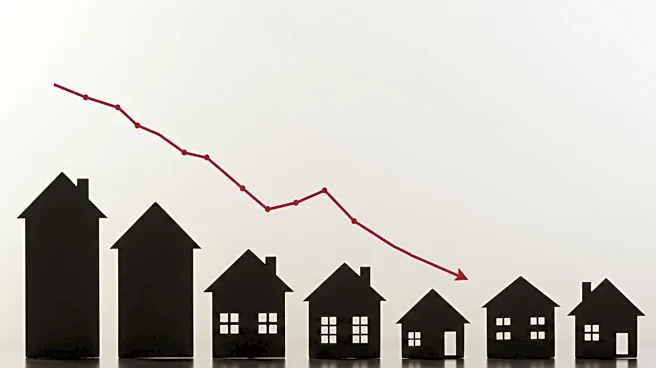What is the story about?
What's Happening?
In July, the median home price in Shasta County was listed at $442,225, marking a 1.7% decrease from the previous month's $449,900, according to data from Realtor.com. Compared to July 2024, the median list price increased by 1.8% from $437,475. The median home in Shasta County was 1,800 square feet, priced at $253 per square foot. Listings in the area moved slowly, with homes on the market for a median of 58 days, consistent with the national median. The number of new listings in July was 268, an 8.1% increase from the previous year. Across the Redding metro area, median home prices slightly decreased to $442,075, with homes averaging 1,800 square feet and listed at $252 per square foot.
Why It's Important?
The slight decrease in home prices in Shasta County reflects broader trends in the California housing market, where median prices fell to $750,000. This shift may indicate a cooling in the real estate market, potentially affecting buyers and sellers. For buyers, the decrease in prices could present more affordable opportunities, while sellers might face challenges in maintaining previous price levels. The increase in new listings suggests a growing inventory, which could further influence market dynamics. These changes are significant for local economic stakeholders, including real estate agents, homeowners, and potential buyers, as they navigate the evolving market conditions.
What's Next?
As the housing market continues to adjust, stakeholders in Shasta County may anticipate further fluctuations in home prices and listing durations. Real estate professionals might focus on strategies to attract buyers and expedite sales. Potential buyers could benefit from increased inventory and potentially lower prices, while sellers may need to adjust expectations and pricing strategies. Monitoring these trends will be crucial for understanding the long-term implications for the local housing market and economy.
Beyond the Headlines
The housing market trends in Shasta County may reflect broader economic conditions, including interest rates and employment levels. As the market adjusts, there could be implications for community development and local government policies. The increase in new listings might also indicate changing demographics or shifts in population dynamics, influencing future housing needs and urban planning.
AI Generated Content
Do you find this article useful?














